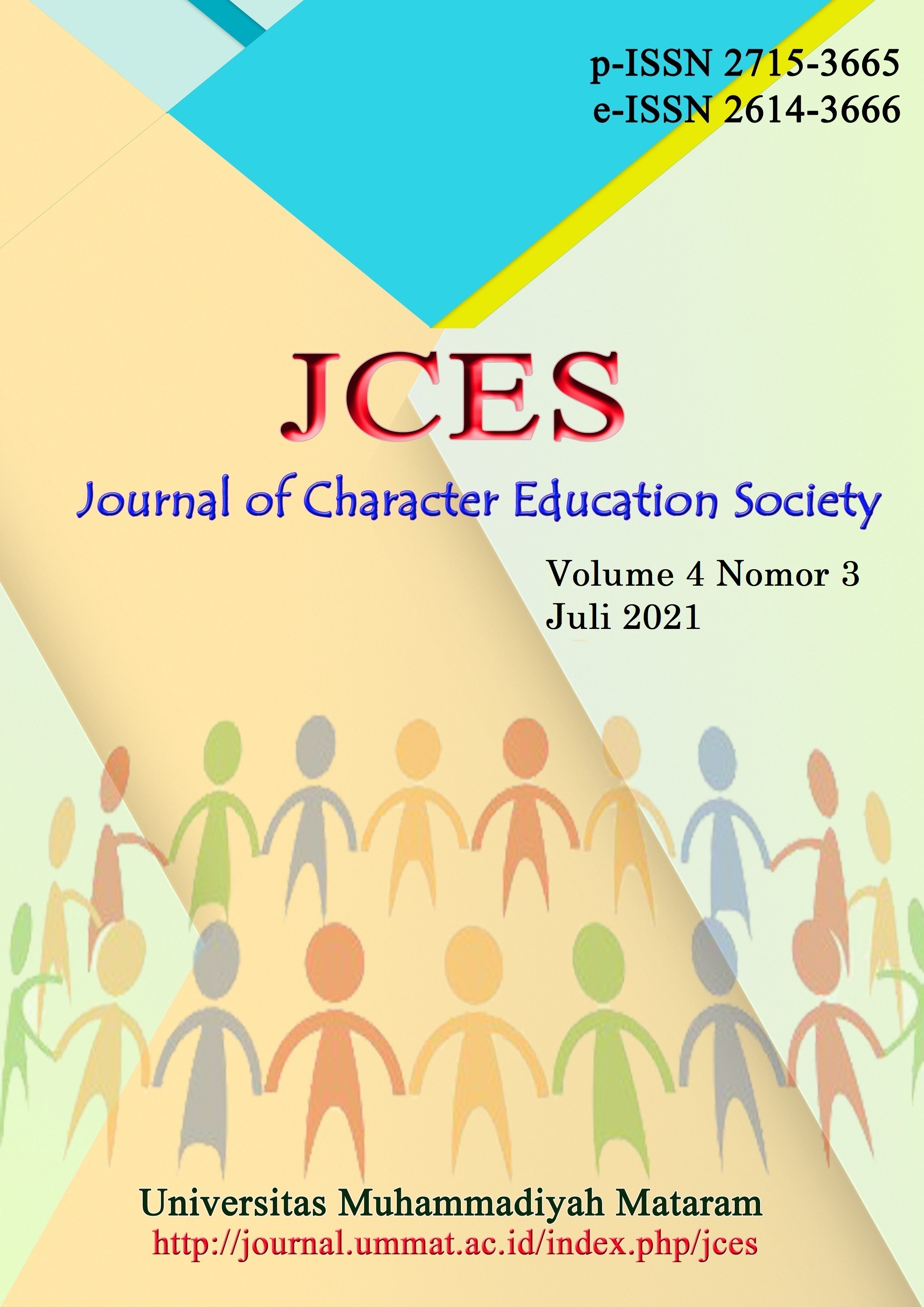THE DEVELOPMENT OF PACKAGING DESIGN OF MORINGA TEA BAG AND MORINGA POWDER PRODUCTION OF KWT SRI REJEKI
DOI:
https://doi.org/10.31764/jces.v4i3.5630Keywords:
Kemasan, Teh Kelor, Serbuk Kelor, Desa Bogo.Abstract
Abstrak: Kelompok Wanita Tani (KWT) Sri Rejeki Desa Bogo merupakan kelompok yang dibentuk oleh Bumdes Desa Bogo dalam bidang produksi berbagai macam produk berbasis kelor, antara lain teh dan serbuk kelor. Kualitas dan desain kemasan kedua produk yang selama ini digunakan masih terbatas dari segi stabilitas dan belum memberikan ciri khas produk. Tujuan dari pelaksanaan program pengembangan desain kemasan ini adalah untuk melakukan perbaikan kemasan kedua produk melalui pemilihan bahan kemas yang optimal, pemilihan komposisi warna yang meningkatkan atensi konsumen, penambahan logo ciri khas produk dan informasi produk. Metode pelaksanaan kegiatan dilakukan melalui pelatihan konsep desain kemasan, pendampingan penyusunan prototipe kemasan, dan aplikasi kemasan baru pada produk. Pelaksanaan kegiatan melibatkan KWT Sri Rejeki, tim PPDM Sentra Kelor, Bumdes Langgeng Makmur, dan Pemerintah Desa Bogo. Hasil program ini adalah kemasan baru untuk produk teh dan serbuk daun kelor dengan kualitas yang lebih baik, desain yang lebih menarik, dan terdapat informasi serta ciri khas produk. Penjualan produk mengalami peningkatan dan kepercayaan konsumen terhadap kualitas produk meningkat setelah digunakan kemasan baru luaran program ini. Â
Abstract:Â Sri Rejeki Farming Women Group of Bogo village (KWT) is a group formed by Bumdes Desa Bogo in the production of various types of moringa-based products, including tea and moringa powder. The quality and packaging design of the two products which was previously used are still limited in terms of stability and do not yet provide product characteristics. The aim of implementing this packaging design development program is to renew the packaging of the two products by selecting optimal packaging materials, adjusting color compositions that increase consumer preferences, implementing product characteristic logos and product information. The method of implementing these activities is carried out through training on packaging design concepts, assistance in the preparation of packaging prototypes, and application of new packaging to the products. The implementation of this activity involved KWT Sri Rejeki, PPDM Sentra Kelor team, Bumdes Langgeng Makmur, and the Bogo Village Government. The result of this program is the new packaging for tea products and Moringa leaf powder with better quality, more attractive design, additional product information and, product characteristics. Product sales have increased and consumer confidence in product quality has increased after the use of new packaging resulted from this program.
References
Adetayo, H. O. (2019). Influence of Packaging on Choice of Fast Moving Consumer Goods At the Point of Purchase Among Shoppers in Southwest , Nigeria. VII(12), 85–101.
Ahmed, R. R., Parmar, V., & Amin, M. A. (1450). Impact of Product Packaging on Consumer’s Buying Behavior. European Journal of Scientific Research, 120(2), 1450–216. https://doi.org/10.13140/2.1.2343.4885
Anggraeni Elisabeth, D. A. (2017). Pengaruh Pengemasan Dan Pelabelan Pada Penerimaan Mi Kering Berbahan Baku Tepung Komposit Ubijalar Dan Keladi. Jurnal Matematika Sains Dan Teknologi, 18(2), 111–119. https://doi.org/10.33830/jmst.v18i2.136.2017
Buys, E. M., & Mostert, J. F. (2011). Packaging Materials and Equipment. Processed Cheese and Analogues, June, 199–218. https://doi.org/10.1002/9781444341850.ch8
Drago, E., Campardelli, R., Pettinato, M., & Perego, P. (2020). Innovations in Smart Packaging Concepts for Food: An Extensive Review. Foods, 9(11), 1628. https://doi.org/10.3390/foods9111628
Huang, L., & Lu, J. (2016). The Impact of Package Color and the Nutrition Content Labels on the Perception of Food Healthiness and Purchase Intention. Journal of Food Products Marketing, 22(2), 191–218. https://doi.org/10.1080/10454446.2014.1000434
Hussain, S., Ibrahim, M., & Noreen, A. (2015). Impact of Product Packaging on Consumer Perception and Purchase Intention. Journal of Marketing and Consumer Research, 10(2011), 1–10.
Khuong, M. N., & Tran, N. T. H. (2018). The Impacts of Product Packaging Elements on Brand Image and Purchase Intention — An Empirical Study of Phuc Long’s Packaged Tea Products. International Journal of Trade, Economics and Finance, 9(1), 8–13. https://doi.org/10.18178/ijtef.2018.9.1.580
Marsh, K., & Bugusu, B. (2007). Food packaging - Roles, materials, and environmental issues: Scientific status summary. Journal of Food Science, 72(3). https://doi.org/10.1111/j.1750-3841.2007.00301.x
Mufreni, A. N. (2016). Pengaruh Desain Produk, Bentuk Kemasan Dan Bahan Kemasan Terhadap Minat Beli Konsumen. Jurnal Ekonomi Manajemen, 2(2), 48–54.
Mukhtar, S., & Nurif, M. (2015). Peranan Packaging Dalam Meningkatkan Hasil Produksi Terhadap Konsumen. Jurnal Sosial Humaniora, 8(2), 181. https://doi.org/10.12962/j24433527.v8i2.1251
Mulyawan, I. B., Handayani, B. R., Dipokusumo, B., Werdiningsih, W., & Siska, A. I. (2019). The Effect of Packaging Technique and Types of Packaging on the Quality and Shelf Life of Yellow Seasoned Pindang Fish. Jurnal Pengolahan Hasil Perikanan Indonesia, 22(3), 464–475. https://doi.org/10.17844/jphpi.v22i3.28926
Ramos, M., Valdés, A., Mellinas, A., & Garrigós, M. (2015). New Trends in Beverage Packaging Systems: A Review. Beverages, 1(4), 248–272. https://doi.org/10.3390/beverages1040248
Wahmuda, F., & Hidayat, M. J. (2018). Makna Tampilan Visual Kemasan Sebagai Penerapan Redesain Kemasan Makanan Ringan Di Ukm Benok–Kabupaten Probolinggo. Prosiding Seminar Nasional Sains …, 2, 579–584. https://ejournal.itats.ac.id/sntekpan/article/view/385
Wyrwa, J., & Barska, A. (2017). Packaging as a Source of Information about Food Products. Procedia Engineering, 182, 770–779. https://doi.org/10.1016/j.proeng.2017.03.199
Yaro, L. M. (2015). An Overview of Branding and Packaging Of a Company Product (A Case Study of British American Tobacco Company Zaria)n. IOSR Journal of Research & Method in Education (IOSR-JRME), 5(1), 35–49. https://doi.org/10.9790/7388-05113549
Downloads
Published
Issue
Section
License
Authors who publish articles in JCES (Journal of Character Education Society) agree to the following terms:
- Authors retain copyright of the article and grant the journal right of first publication with the work simultaneously licensed under a CC-BY-SA or The Creative Commons Attribution–ShareAlike License.
- Authors are able to enter into separate, additional contractual arrangements for the non-exclusive distribution of the journal's published version of the work (e.g., post it to an institutional repository or publish it in a book), with an acknowledgment of its initial publication in this journal.
- Authors are permitted and encouraged to post their work online (e.g., in institutional repositories or on their website) prior to and during the submission process, as it can lead to productive exchanges, as well as earlier and greater citation of published work (See The Effect of Open Access).

